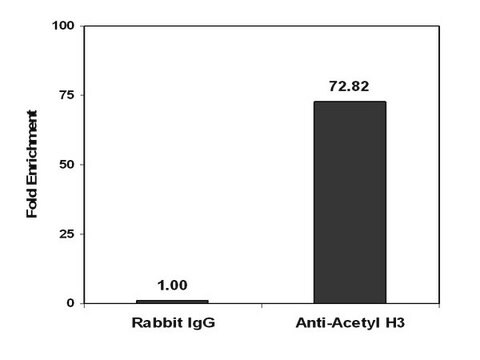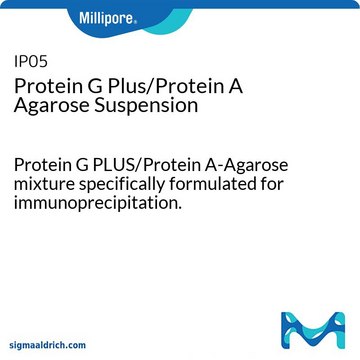PROTAA-RO
Roche
Protein A Agarose
>98% (HPLC and SDS-PAGE), suspension
Sinónimos:
agarose, protein a
About This Item
Productos recomendados
assay
>98% (HPLC and SDS-PAGE)
form
suspension
packaging
pkg of 15 mL (05015979001 [settled resin volume])
pkg of 2 mL (11719408001 [settled resin volume])
pkg of 5 mL (11134515001 [settled resin volume])
manufacturer/tradename
Roche
capacity
>18 mg/mL binding capacity (human IgG (polyclonal))(the IgG is loaded at pH 7.4 and eluted with 200 mM glycine, pH 2.0)
storage temp.
2-8°C
General description
Protein A leakage: <18 ng Protein A/ml (ELISA)
Regeneration: the gel can be used approximately 30 times
Structure: recombinant Protein A (E. coli, Mr = 45,000) is covalently coupled to crosslinked 6% agarose beads: 3 mg Protein A (>98% pure, HPLC, SDS-Page)/1 ml gel
Protein A, immobilized.
Specificity
Application
Components
Protein A content: 3 mg/ml pre-swollen gel
Quality
Other Notes
signalword
Warning
hcodes
Hazard Classifications
Eye Irrit. 2 - Flam. Liq. 3
Storage Class
3 - Flammable liquids
wgk_germany
WGK 1
flash_point_f
102.2 °F
flash_point_c
39 °C
Elija entre una de las versiones más recientes:
¿Ya tiene este producto?
Encuentre la documentación para los productos que ha comprado recientemente en la Biblioteca de documentos.
Los clientes también vieron
Nuestro equipo de científicos tiene experiencia en todas las áreas de investigación: Ciencias de la vida, Ciencia de los materiales, Síntesis química, Cromatografía, Analítica y muchas otras.
Póngase en contacto con el Servicio técnico












